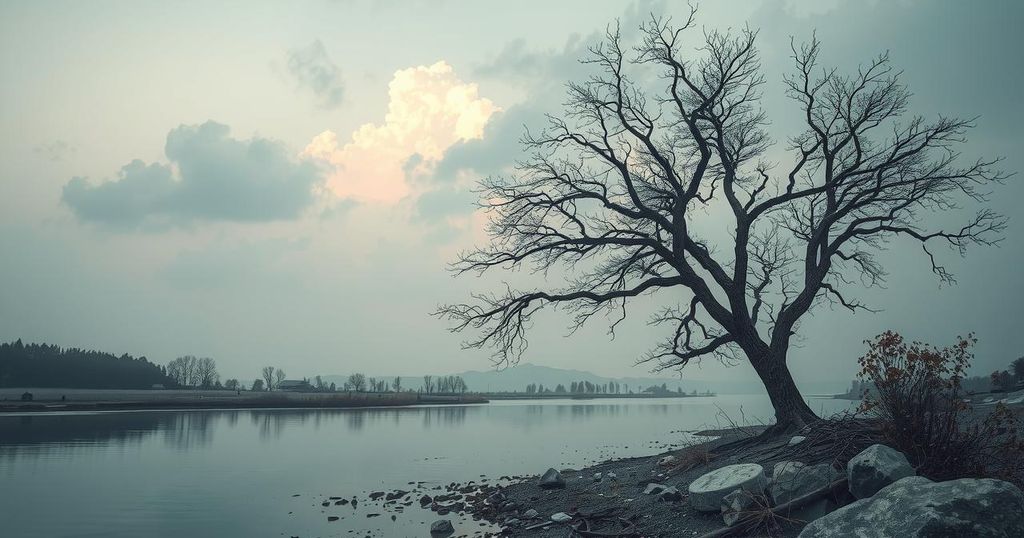The situation in Goma, DR Congo, remains dire as M23 rebels, allegedly supported by Rwanda, continue to displace families and inflict violence. Hospitals are overwhelmed due to the influx of injured civilians and soldiers. Displaced individuals face ultimatums from the M23, who promise peace while being accused of human rights abuses. The long-standing conflict’s roots trace back to historical grievances, notably the 1994 Rwandan genocide.
Heshima, a 13-year-old boy, suffers physically and emotionally in a tent at an overcrowded hospital in Goma, DR Congo, after losing both parents in recent violence. His injuries, sustained from a bombing, underscore the dire situation resulting from the advance of M23 rebels, who are supported by Rwanda, against the Congolese army (FARDC). Tantine, a family relative, recounts the day of the bombing, which claimed six lives from her family.
The M23 rebels, primarily consisting of ethnic Tutsis, assert that they are restoring order in a chaotic state, claiming to have liberated Goma. Since early 2022, they have aggressively expanded their territory, allegedly with assistance from approximately 4,000 Rwandan troops, although Rwanda’s government denies these allegations. The United Nations suggests that Rwanda exercises significant control over the rebel group.
As the M23 continues to seize territory, local medical facilities are overwhelmed. Ndosho Hospital, where Heshima receives treatment, has struggled to manage a sudden influx of patients amidst the ongoing conflict. Reports indicate that the death toll has reached nearly 3,000 as the fighting rages. Medical staff frequently experience extreme fatigue due to constantly attending to numerous patients in need.
Despite the chaos inflicted by the M23 presence, some semblance of normalcy is visible in Goma, with shops operating and streets alive with activity. However, residents must navigate an uncertain future under rebel control, with fears of reprisals limiting free expression among the media. Activists share concerns about the current climate, referring to this era as unprecedentedly dangerous for Goma.
The M23, in turn, promises prosperity while delivering ultimatums to displaced families residing in camps. Divine, a young mother, conveys the desperation felt by many who have lost their homes and face pressure to vacate camps amid dire hunger and lack of resources. Many are left feeling forced to relocate despite claims of voluntary returns.
Human rights organizations have raised alarms regarding the M23’s brutal tactics, including indiscriminate violence against civilians. The ongoing conflict has roots in the aftermath of the 1994 Rwandan genocide, with deeper issues tied to control over valuable resources in DR Congo. This pursuit of wealth has raised substantial concerns regarding an escalation of regional conflicts influenced by foreign interests.
One such displaced individual, Alphonsine, who is burdened with possessions as she leaves Bulengo camp, faces an uncertain return to her destroyed home. The weight of her circumstances looms as she prepares for a long journey ahead without hope for survival. Her statement, “I came from suffering, and I leave in suffering,” resonates with the despair echoed throughout the encampment.
In conclusion, the conflict in Goma, primarily driven by the M23 rebels and their Rwandan backing, continues to devastate families, as evidenced by the tragic circumstances faced by individuals such as Heshima and Divine. As the local landscape shifts under the weight of violence and displacement, the preservation of human rights and basic dignity remains tenuous amid widespread suffering. The implications of the ongoing control and turmoil over DR Congo’s resources portend a complex and perilous future for the region.
Original Source: www.bbc.com






